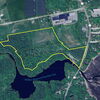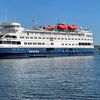Processing Your Payment
Please do not leave this page until complete. This can take a few moments.
- News
-
Editions
-
- Lists
-
Viewpoints
-
Our Events
-
Event Info
- Women's Leadership Forum 2025
- On the Road with Mainebiz in Bethel
- Health Care Forum 2025
- On The Road with Mainebiz in Greenville
- On The Road with Mainebiz in Waterville
- Small Business Forum 2025
- Outstanding Women in Business Reception 2025
- On The Road with Mainebiz in Bath
- 60 Ideas in 60 Minutes Portland 2025
- 40 Under 40 Awards Reception 2025
- On The Road with Mainebiz in Lewiston / Auburn
- 60 Ideas in 60 Minutes Bangor 2025
Award Honorees
- 2025 Business Leaders of the Year
- 2024 Women to Watch Honorees
- 2024 Business Leaders of the Year
- 2023 NextUp: 40 Under 40 Honorees
- 2023 Women to Watch Honorees
- 2023 Business Leaders of the Year
- 2022 NextUp: 40 Under 40 Honorees
- 2022 Women to Watch Honorees
- 2022 Business Leaders of the Year
-
-
Calendar
-
Biz Marketplace
- News
-
Editions
View Digital Editions
Biweekly Issues
- April 21, 2025 Edition
- April 7, 2025
- March 24, 2025
- March 10, 2025
- Feb. 24, 2025
- Feb. 10, 2025
- + More
Special Editions
- Lists
- Viewpoints
-
Our Events
Event Info
- View all Events
- Women's Leadership Forum 2025
- On the Road with Mainebiz in Bethel
- Health Care Forum 2025
- On The Road with Mainebiz in Greenville
- On The Road with Mainebiz in Waterville
- + More
Award Honorees
- 2025 Business Leaders of the Year
- 2024 Women to Watch Honorees
- 2024 Business Leaders of the Year
- 2023 NextUp: 40 Under 40 Honorees
- 2023 Women to Watch Honorees
- 2023 Business Leaders of the Year
- + More
- 2022 NextUp: 40 Under 40 Honorees
- 2022 Women to Watch Honorees
- 2022 Business Leaders of the Year
- Nomination Forms
- Calendar
- Biz Marketplace
January 24, 2005
Changing hands | Cianbro's Peter Vigue reports on the company's recent transition to employee ownership
By Joseph R. Thompson
The end of 2004 ushered in a new era for Cianbro Corp. and its president and CEO, Peter Vigue: the completion of a 25-year process placing ownership of Maine's largest construction company in the hands of its employees.
According to Vigue, the move to employee ownership reflects the close-knit nature of the company, which was incorporated in Pittsfield in 1949 by three brothers, Carl, Ken and Bud Cianchette. (Vigue, too, grew up in the town, delivering newspapers to the Cianchette family, among others, and then joining their firm in an entry-level position in 1971). The company instituted a profit-sharing plan in 1964, then in 1979 created an employee stock ownership plan. "The brothers had a concern that when people retire there should be some device for retirement," said Vigue. "The whole strategy was to create an incentive program for retirement."
At the time, ESOPs were a relatively small phenomenon, with approximately 1,600 plans and 248,000 participants nationwide, according to the National Center for Employee Ownership. As the Cianchette brothers transitioned their shares in the company to employee ownership over the last two-and-a-half decades, ESOPs became much more popular; by 2001, the most recent year for which data were available, there were approximately 11,400 different plans and 8.5 million participants in the United States.
The last step in Cianbro's evolution to employee ownership was the liquidation of Bud and Ken Cianchette's remaining five percent to six percent of company stock; as of Dec. 31, the ESOP holds 100% of Cianbro stock in a trust. Every year, Fidelity Investments assesses the company's value, which (plus cash profits) determines the total value of the ESOP. "There is one stockholder: the trust," said Vigue. "And we are all members of the plan."
Unlike shareholders at publicly traded companies, Cianbro's 2,300 employees do not have voting rights. A board of directors operates the company and names the CEO. "The decisions we make as an organization are directed to improving the net worth of the company," said Vigue. "The board makes the decisions in the company's best interest and the people's best interest."
To maintain financial stability, the company made the shift to the ESOP gradually. During that time several large employers with ESOPs ˆ including Enron, WorldCom and United Airlines ˆ faced economic hardship for a variety of reasons, and ultimately their employees, whose retirements were largely funded by the ESOP, were left vulnerable. "Back in the mid- to late 80s there were some ESOP companies struggling because the process was new back then," says Vigue. "These companies didn't have the liquidity to deal with the retirement of employees; what the industry learned was that maintaining the liquidity ˆ the cash, the money ˆ to pay out to people as they leave is key."
This lack of liquidity, in Vigue's perspective, forced many of these companies to either sell out or go public ˆ a fate he says is not in Cianbro's future. Enron's failure in particular caused widespread questioning of the practice of basing entire retirement programs on ESOPs. "No one individual can put all their money in Cianbro stock," said Vigue. "We learned from the mistakes of others."
Despite the risks, companies that implement ESOPs frequently reap financial rewards from them, according to a 2000 Rutgers University study, which found that annual employment growth and annual growth in sales per employee increased by an average of 2.3% at companies that implemented an employee ownership program. "We've far exceeded those numbers," said Vigue, who also sees tangible benefits in employees' attitudes resulting from the ESOP. "The culture here is one that allows for personal growth and training. People see a relationship [between] their day-to-day involvement and the outcome."
According to Vigue, the move to employee ownership reflects the close-knit nature of the company, which was incorporated in Pittsfield in 1949 by three brothers, Carl, Ken and Bud Cianchette. (Vigue, too, grew up in the town, delivering newspapers to the Cianchette family, among others, and then joining their firm in an entry-level position in 1971). The company instituted a profit-sharing plan in 1964, then in 1979 created an employee stock ownership plan. "The brothers had a concern that when people retire there should be some device for retirement," said Vigue. "The whole strategy was to create an incentive program for retirement."
At the time, ESOPs were a relatively small phenomenon, with approximately 1,600 plans and 248,000 participants nationwide, according to the National Center for Employee Ownership. As the Cianchette brothers transitioned their shares in the company to employee ownership over the last two-and-a-half decades, ESOPs became much more popular; by 2001, the most recent year for which data were available, there were approximately 11,400 different plans and 8.5 million participants in the United States.
The last step in Cianbro's evolution to employee ownership was the liquidation of Bud and Ken Cianchette's remaining five percent to six percent of company stock; as of Dec. 31, the ESOP holds 100% of Cianbro stock in a trust. Every year, Fidelity Investments assesses the company's value, which (plus cash profits) determines the total value of the ESOP. "There is one stockholder: the trust," said Vigue. "And we are all members of the plan."
Unlike shareholders at publicly traded companies, Cianbro's 2,300 employees do not have voting rights. A board of directors operates the company and names the CEO. "The decisions we make as an organization are directed to improving the net worth of the company," said Vigue. "The board makes the decisions in the company's best interest and the people's best interest."
To maintain financial stability, the company made the shift to the ESOP gradually. During that time several large employers with ESOPs ˆ including Enron, WorldCom and United Airlines ˆ faced economic hardship for a variety of reasons, and ultimately their employees, whose retirements were largely funded by the ESOP, were left vulnerable. "Back in the mid- to late 80s there were some ESOP companies struggling because the process was new back then," says Vigue. "These companies didn't have the liquidity to deal with the retirement of employees; what the industry learned was that maintaining the liquidity ˆ the cash, the money ˆ to pay out to people as they leave is key."
This lack of liquidity, in Vigue's perspective, forced many of these companies to either sell out or go public ˆ a fate he says is not in Cianbro's future. Enron's failure in particular caused widespread questioning of the practice of basing entire retirement programs on ESOPs. "No one individual can put all their money in Cianbro stock," said Vigue. "We learned from the mistakes of others."
Despite the risks, companies that implement ESOPs frequently reap financial rewards from them, according to a 2000 Rutgers University study, which found that annual employment growth and annual growth in sales per employee increased by an average of 2.3% at companies that implemented an employee ownership program. "We've far exceeded those numbers," said Vigue, who also sees tangible benefits in employees' attitudes resulting from the ESOP. "The culture here is one that allows for personal growth and training. People see a relationship [between] their day-to-day involvement and the outcome."










Comments